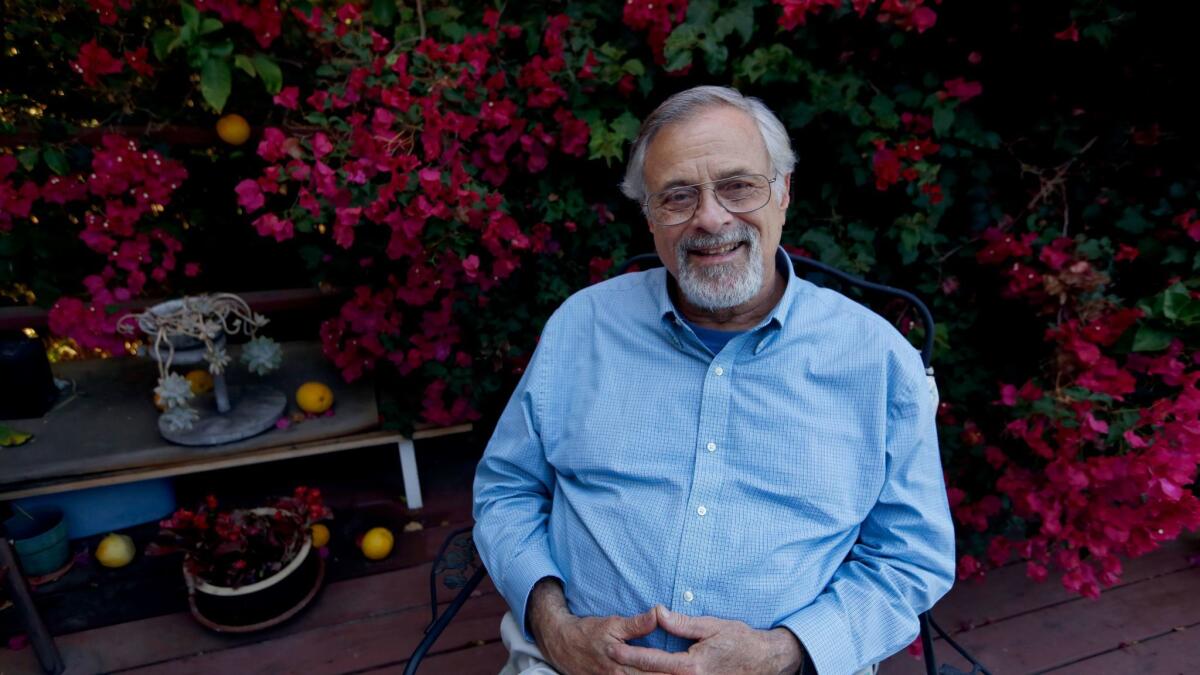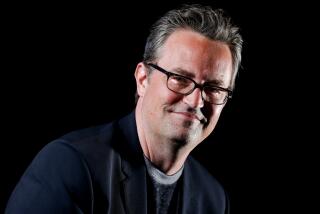She watched her ex-husband end his life under California’s new right-to-die law. ‘I felt proud’

Six months since the right-to-die law went into effect, 111 Californians have taken their own lives. (June 28, 2017)
- Share via
Bob Stone sat at his dining room table and twisted open 90 red capsules, one by one. From them he collected a small pile of powder.
In an hour, when the sun finished setting outside his Silver Lake home, he would use the drug to end his life.
Stone mixed applesauce with the powdered secobarbital, a powerful sedative that is fatal in high doses. He ate the bitter blend.
His ex-wife Roberta Stone sat next to him, watching. She fixed her dark eyes on a bowl filled with dozens of empty red capsules.
Then they crawled into bed, and embraced. They whispered to each other. Half an hour later, she heard him stop breathing.
Stone, 69, had been diagnosed with bone marrow cancer the year prior, and chemotherapy had failed. He was one of 111 people last year who took advantage of a new law in California allowing people with terminal illnesses to request medicines from their doctors to kill themselves.

Roberta Stone said she was grateful Bob avoided what he’d called the “ hard part” — not death, but dying. Her brother endured six weeks of agony when dying of Parkinson’s, she said.
“Who would want that for someone they love, or for themselves?” she said.
The debate around physician-assisted suicide laws tends to focus on patients. But California’s early experiences show the practice also has a profound impact on those left behind.
Family members have typically spent months, if not years, accompanying loved ones to doctor’s appointments, sitting by hospital beds, suffering the ups and downs of treatment. They’ve been part of an arduous process that sometimes seemed to strip their relatives of autonomy and dignity.
A request for end-of-life drugs can inspire regret or sorrow among family and friends. But, experts say, it can also be powerful and comforting for grieving family members to know they fulfilled their loved one’s dying wish.
‘My parents didn’t have that control.… This is comforting to me’
That Saturday morning in September, Roberta, a retired legal secretary with short curly hair and a toothy smile, felt nervous as she prepared to leave her home in Glendale. But she’d promised her ex-husband she’d spend his last day with him.
The couple divorced five years ago but never cut the ties of their relationship. After meeting in 1991 on a Sierra Club hike in Malibu, they were “together always,” she said.
When they were newly married, talking about growing old, he told her he didn’t want to languish near the end of his life.
In July last year, Bob Stone told The Times in an interview that his mother, father and uncle endured painful medical treatments when they were sick, forced to spend their last few days in hospitals.
Stone said he was grateful to make his own decisions about the end of his life. His doctors had recently told him his cancer treatments had stopped working and he had as little as three months to live.
By July, he’d already received the secobarbital prescription.
“My parents didn’t have that control, my uncle didn’t have that control,” he told The Times. “This is comforting to me.”
Dr. Neil Wenger, director of the UCLA Health Ethics Center, said many people who request lethal prescriptions don’t necessarily intend to use them. Often they’re in clinical trials, fighting to extend their lives.
“These patients do not want to die. These patients just want to control how they die when they absolutely must,” Wenger said.
Sometimes they don’t even pick up the pills from the pharmacy once they’ve been prescribed them, he said.
But the mere conversations that are prompted when patients request the medicines can improve the patient’s care, as well as the family’s experience, Wenger said. Talking openly about end-of-life options has spurred patients to write keepsake letters and record video messages for their children and grandchildren. It’s pushed people to say things that may have otherwise been left unsaid.
The process, he said, can force a “coming to grips with the end of life, pulling together one’s affairs, not only financially, but also psychologically, emotionally — bringing families together.”
Between June and December last year, 191 Californians received lethal prescriptions but only 111 took them, state data show. In Oregon, which was the first state to legalize the practice two decades ago, only about two-thirds of those who get the prescriptions end up using them.
Despite the relatively small number of people who die from physician-assisted suicide, the practice remains the subject of impassioned debate.
Writing lethal prescriptions is completely voluntary in California, and some medical facilities, including all Catholic and church-affiliated hospitals, have not allowed their physicians to prescribe such medicines. Earlier this month, a court ruled that a lawsuit to overturn California’s law would be allowed to go to trial.
A Gallup poll last year found that 69% of Americans support legalizing doctor-assisted suicide, up from 36% in 1950. Experts say that attitudes around death are shifting in part because people are planning for the first time to live into their 80s or 90s, and are considering conditions their parents or grandparents might have endured that they want to avoid.
Data from both California and Oregon show that the majority of aid-in-dying patients are white, college-educated, older than 60 and, like Stone, suffering from terminal cancer.
‘Bob had time to come to terms with it’
Stone, who had a long career dedicated to helping the homeless, had a handful of things he wanted to do before he died. He traveled to Vietnam, Japan and Thailand, he reached out to old friends. He completed a project to photograph every state Capitol building.
“He actually had on the side of his file cabinet a bucket list,” Roberta Stone said.
But his energy level faded. He had a few good hours each day, at most. He was in hospice.
He decided he would take the secobarbital pills on Sept. 10. He told Roberta that it was on that day more than half a century earlier that he’d moved to Los Angeles as a boy with his mother and siblings.
“Bob had time to come to terms with it,” she said. “And I felt proud of Bob that … he knew what he wanted to do.”
Anne Coscarelli, a clinical psychologist and founding director of the Simms/Mann – UCLA Center for Integrative Oncology, said aid in dying can be very meaningful for patients’ families, especially after watching a loved one suffer with a tough illness.
“They felt like this was that person’s last wish, and that can be honored,” she said.
Plus, family members can plan to be there for the death itself, which offers a “sense of peace and comfort by being present together in that moment,” she said.
Bob Stone continued to cross things off his list as September approached. He enrolled in lessons to learn to play “Lady of Spain” on the accordion, an instrument he gave up at age 11.
Five weeks later, he could play the song from memory. In August, he donated the accordion he’d been holding on to since childhood.
Roberta Stone had been anxious that September morning, but she felt more at ease when she arrived at Bob’s home. He was comfortable, happy.
She told him he didn’t have to do it that day, but he said he wanted to.
When eating the applesauce and secobarbital mixture, he even joked that it was so bitter, next time he’d mix it with pudding.
As they lay in bed moments later, wrapped around each other, Bob told her the medicine was working. She gasped.
He replied: “No, it’s good. It’s good.”
ALSO
111 terminally ill patients took their own lives in first 6 months of California right-to-die law
An LAPD officer needs a bone marrow transplant. His ethnicity limits his chances of getting one
More to Read
Sign up for Essential California
The most important California stories and recommendations in your inbox every morning.
You may occasionally receive promotional content from the Los Angeles Times.











